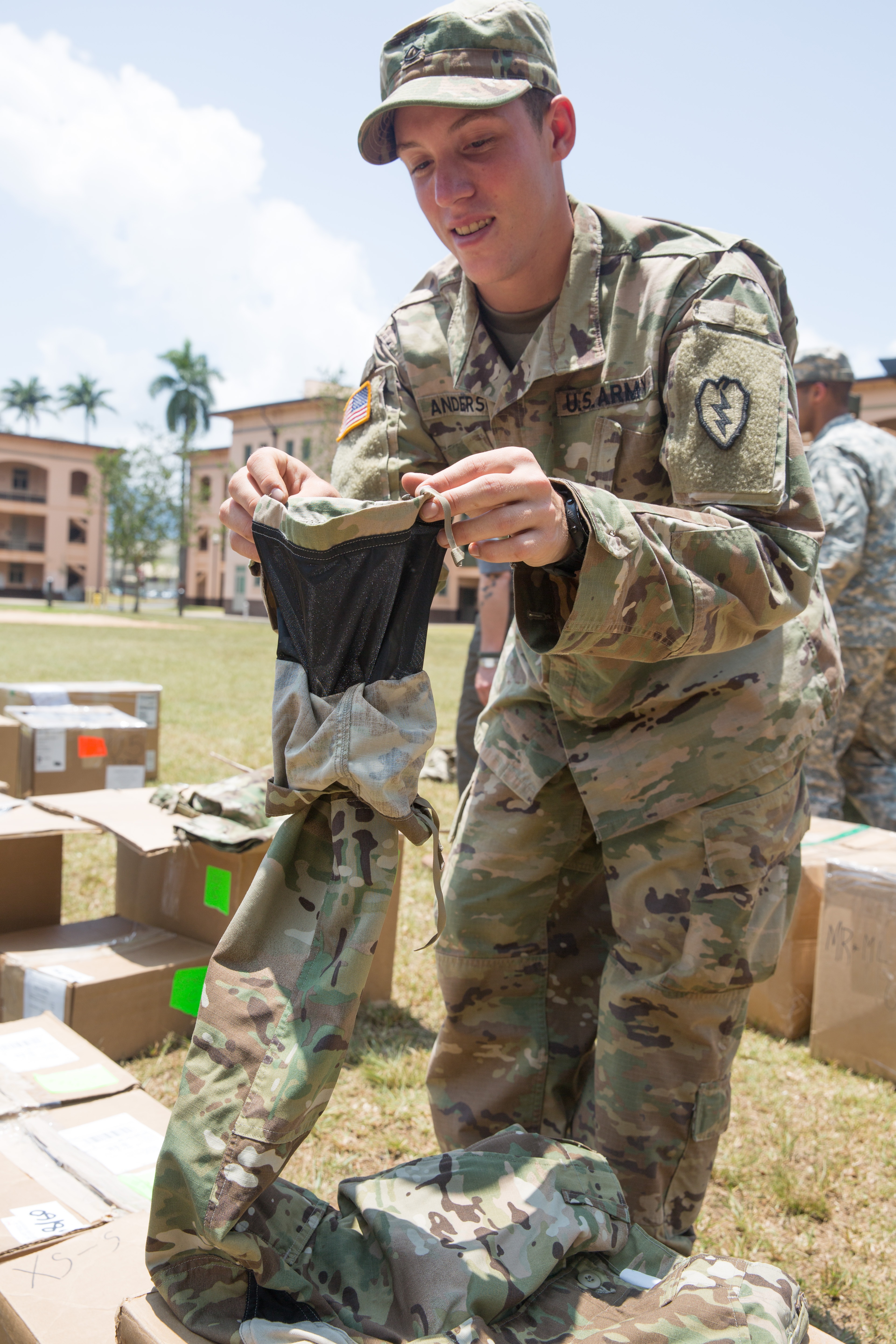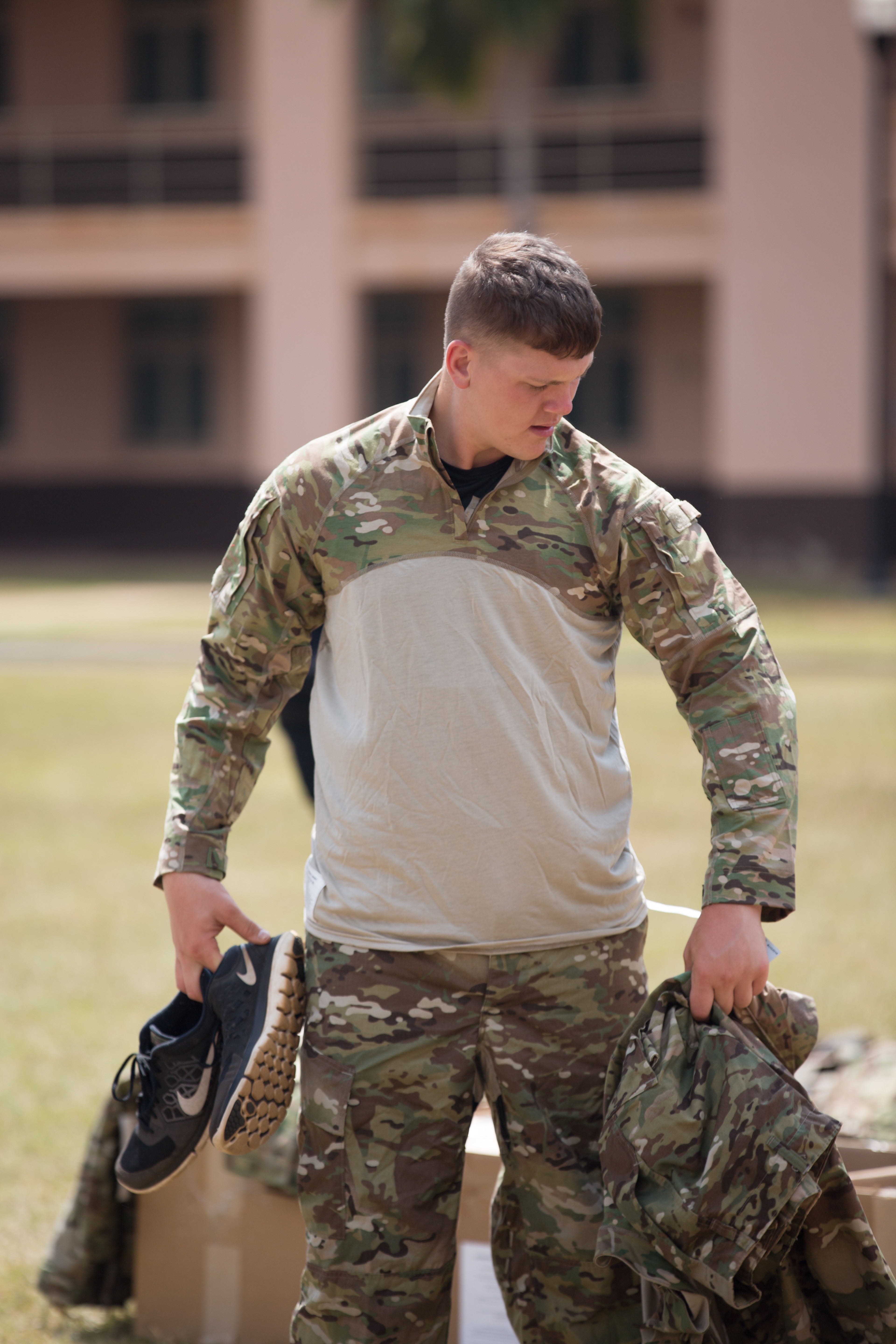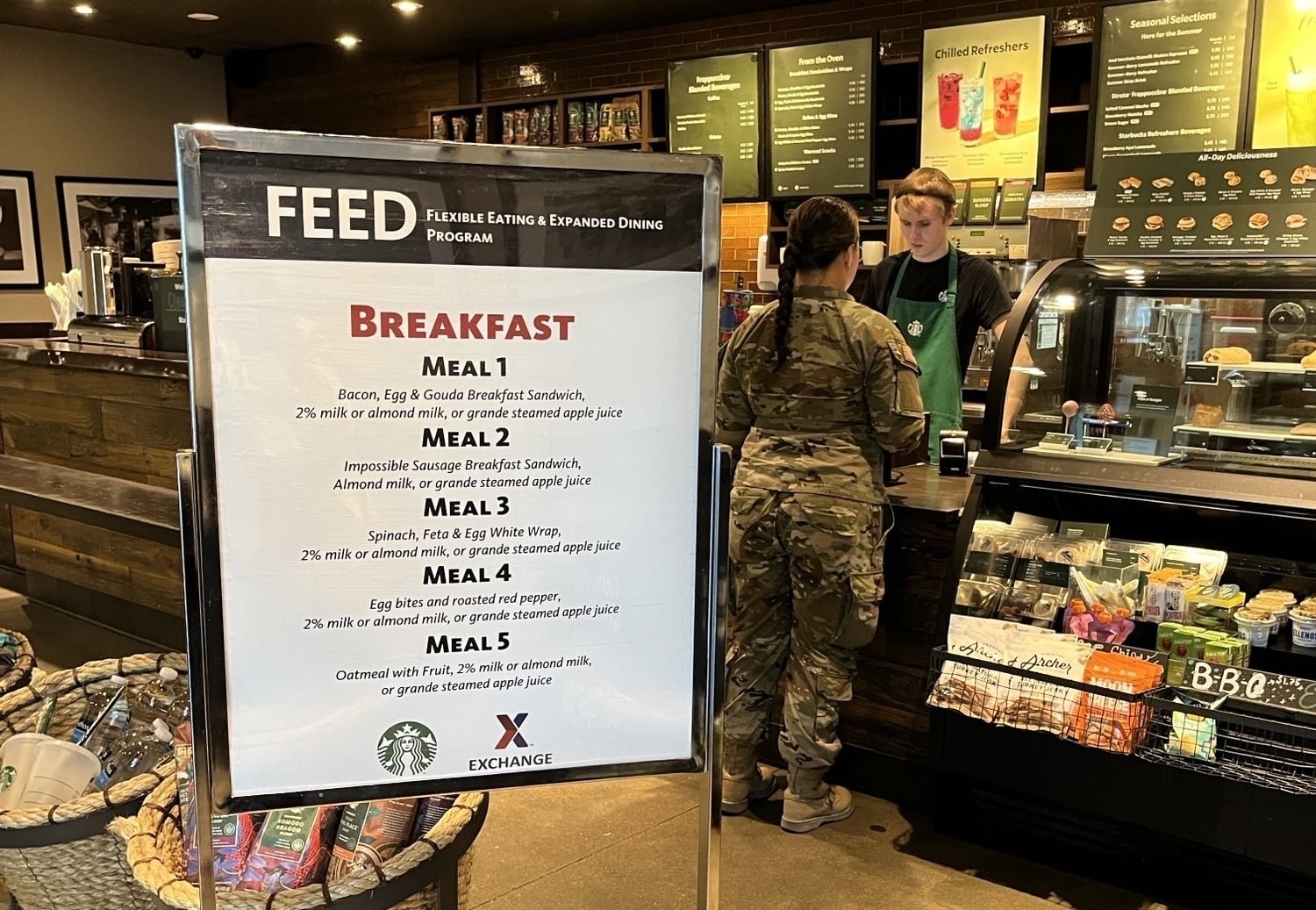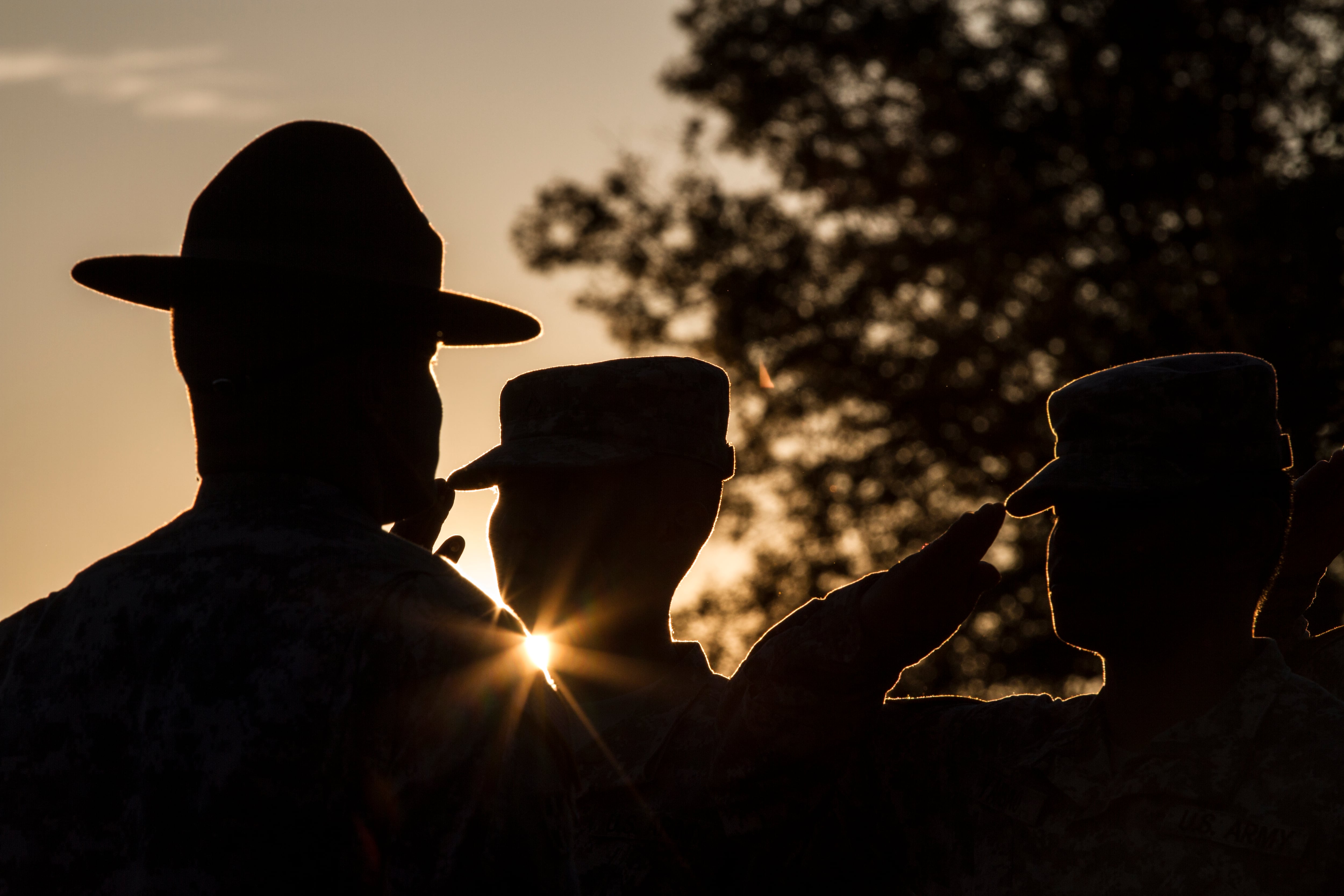The Army continues to dial up jungle operations, with thousands of troops rotating through the Pacific every three months or so. While the Asia missions have been a boon for the service, and soldiers have been quick to embrace them, one big hurdle remains: Soldiers are being sent there in uniforms ill-suited for unrelenting humidity, heavy rains and perpetual sogginess. But change is coming soon.
The Army, over the last 18 months, has quietly held four uniform trials in Hawaii, with thousands of soldiers wearing a variety of new uniform designs. The hope is to finalize a new tropical wardrobe by 2018 that is lightweight, quick-drying, comfortable, and durable.
The Army examined new fabric combinations and soldiers wore Army Combat Uniforms with significant design tweaks. Some of the uniforms, for example, included vents in the sleeves and mesh tuck-ins on the trousers.
A cooling Army Combat Shirt was also examined, as were several variants of boots.
Soldiers in the 25th Infantry Division and its jungle school did their part to help officials at Natick Soldier Research Development and Engineering and Program Executive Office Soldier determine the right mix of attributes.
Experts at PEO Soldier and Natick walked Army Times through the recent uniform trials and outlined the next steps to making the new Army jungle uniform a reality.
Jungle-friendly uniforms
The Army wanted a lighter-weight uniform for the jungle, so soldiers were asked to test what the Army called a "stripped-down ACU."
This uniform, still using the Army’s Operational Camouflage Pattern, had the following jungle-minded features:
* The chest, calf and back pockets were removed to reduce weight and dry-time.
* Blousing strings were eliminated from trousers to allow for airflow and drainage.
* The elbows, knees and seat were reinforced with 330 denier nylon, a thicker nylon that increases durability and abrasion resistance.
* Crotch gussets, extra patches of fabric that reduces stress on the seams, were added to prevent blowouts common to the Flame Resistant ACUs.
* Buttons were used on the ACU blouse instead of a zipper, with the intent to increase air flow.
Another version of the ACU took the jungle-focus a step further, incorporating mesh into the uniform’s design. This uniform included all the design tweaks of the simplified ACU mentioned above, with the exception of the blouse buttons. This uniform used a zipper.
This blouse included vents along the shoulder blades that incorporated a mesh lining for improved air flow.
Another big feature with this modified uniform: soldiers could leave their boots unbloused, once again to improve airflow. The trousers feature mesh material on the inside of the pant leg, near the ankle; with this mesh tucked into the boots, the ACU provides insect and leech protection while allowing soldiers to un-blouse. Mesh is also incorporated into the crotch gusset.
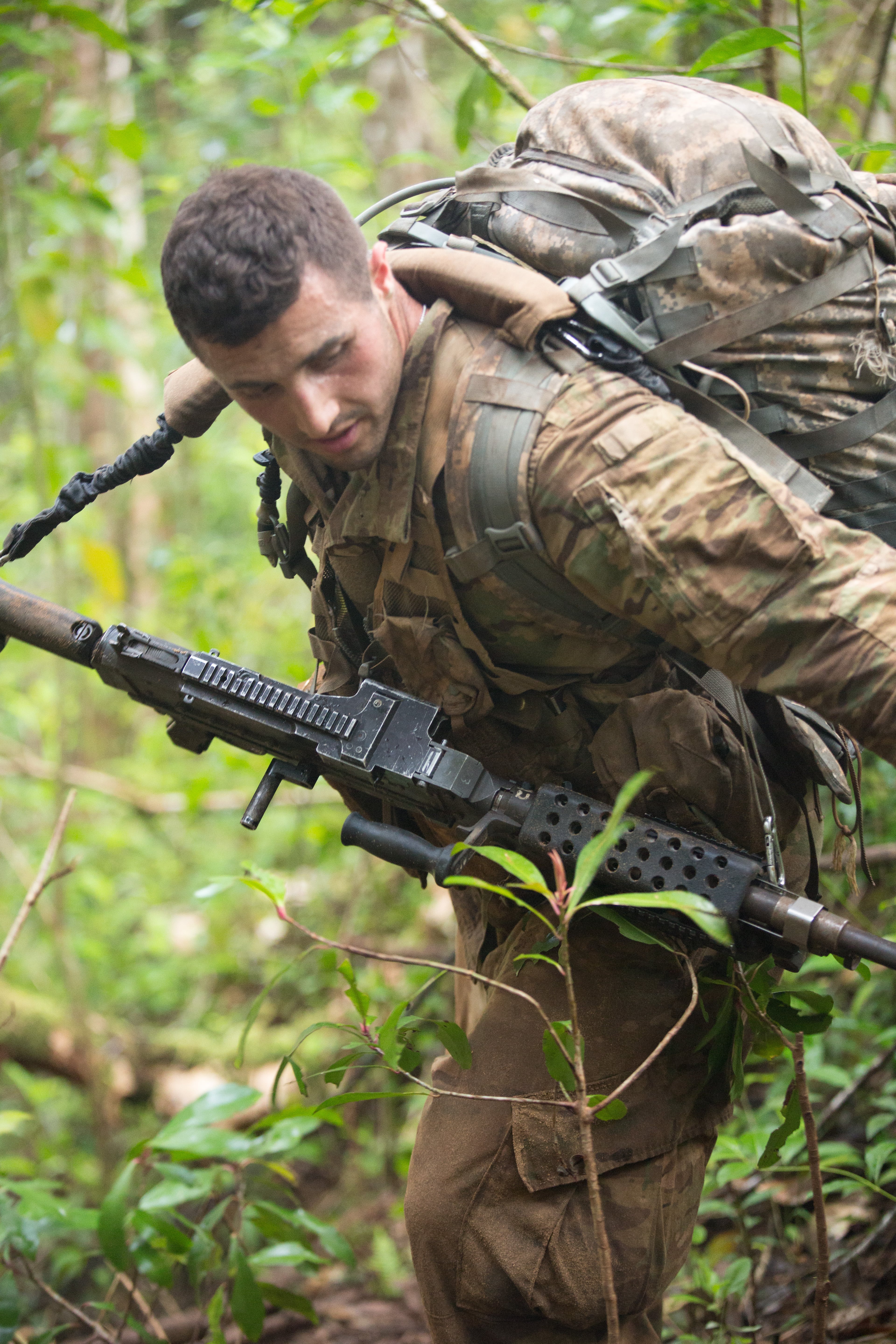
Soldier feedback has been critical to determining the features of a new jungle uniform.
Photo Credit: Sgt. Ian D. Morales/Army
The Army also tested trousers with and without a knit yoke, a wicking material at the back of the trousers below the waist band. The yoke was designed to give lower-back moisture somewhere to go.
Soldiers in Hawaii also tested two Army Combat Shirts: the tops designed for wear with body armor vests. One version of the shirt was made with a cooling material for the torso and inner collar. Companies that make cooling materials claim the special materials can absorb sweat and create a cooling effect as the shirt dries.
The second version was made with a wicking material
,
which draws sweat away from the body to the surface so it can more quickly evaporate.
The combat shirt’s modesty panel — an extra layer of fabric on the upper chest of a combat shirt — was removed to reduce layering on both versions of the jungle combat shirt. Testers also jettisoned the combat shirt’s foam elbow pads, which can collect moisture and gain significant weight.
As a control in the uniform trials, some soldiers wore the Army’s standard FRACU.
trying new fabrics
The Army conducted a total of four uniform user evaluations over the past year and a half and three of those were focused purely on material. Soldiers all wore the same ACU design, the stripped down version, but made with different fabric combinations.
Textile chemist Melynda Perry, the Jungle Fabric and Architecture Development Effort project lead for Natick, said the lab data on the materials, combined with soldier feedback, would help the Army create requirements for a new fabric it would design in 2017.

The Army continues to rotate thousands of soldiers through the jungles.
Photo Credit: Sgt. Ian D. Morales/Army
"We don’t just want to pick a fabric; because it may be OK, but what if there’s something better?" Perry said. "We’ll look at best of these and develop a single material."
The Army examined eight material combinations in Hawaii:
1.
The base material tested should have felt familiar to soldiers. Like a standard ACU, this uniform consisted of a 50/50 nylon/cotton weave with a ripstop reinforcement.
This uniform took advantage of nylon’s strength and cotton’s comfort, and then added ripstop: extra-thick reinforcement threads woven in a crosshatch pattern. Cotton has pros and cons. It gets stronger when wet, but also heavier. It also takes longer to dry compared to other textiles.
2.
This ACU featured the same 50/50 nylon/cotton blend as an ACU, but use a twill weave rather than a simple weave backed by ripstop. Rather than a simple perpendicular weave, twill (like your jeans) takes a diagonal pattern designed for strength and durability.
3.
The Army also tried a 38/38/24 blend of nylon, cotton, and PTFE (polytetrafluoroethylene: the same chemical compound is the basis for teflon non-stick pans). PTFE is strong, lightweight and doesn’t absorb water. This uniform used a twill weave.
4.
Soldiers also wore a uniform made of 100 percent nylon ripstop. With no cotton, the material does not take on very much water and weighs less than cotton blends, while retaining the relative strength of nylon. This uniform was one of the lightest tested. The trousers were made slightly heavier than the blousers, to increase
durability.
5.
Another nylon-cotton blend, this uniform went higher with the nylon (57/43) and used a specialized high-strength nylon called T420 HT.
6.
This uniform was 98 percent nylon, 2 percent spandex. Made with a simple weave (no ripstop nor twill), this was the lightest uniform tested
.
The spandex added a slight degree of flexibility, stretch recovery and reduced weight.
7.
This uniform was a blend of 37/33/30 aramid/nylon/flame-resistant cotton. Aramids are synthetic polymers and Kevlar is an example of one. The Aramid helped increase the fabric’s durability and a twill weave helped further. Aramid is also naturally flame-resistant, like the particular cotton used in this blend.
8.
Finally, the Army looked at a polyester-based fabric, using a twill weave. Polyester is quick-drying and has low-water absorption. It’s strong but not as strong as nylon, and also offers a bit less elasticity. The blend is 58/52 polyester/cocona polyester, the latter of which is includes a carbon derived from coconut husks. This further improves moisture-management.
Soldier reactions
While the data and qualitative feedback are still being analyzed, Army Times was able to talk to a couple soldiers about their experience testing the new uniforms.
Aside from Hawaii, where he works as a jungle school instructor, Staff Sgt. Larry Aviles has trained in the jungles of Okinawa, Guam, the Philippines, and Gabon, Africa. And he said that when it comes to uniform materials, lighter doesn’t always mean better.
"Some felt like a regular uniform. Some felt like you were putting on pajamas," Aviles said of the different fabrics. "The ones made out of thinner materials, everyone liked them until you got wet. Then they got cold. The jungle can get cold at night. You can catch hypothermia in a tropical environment."
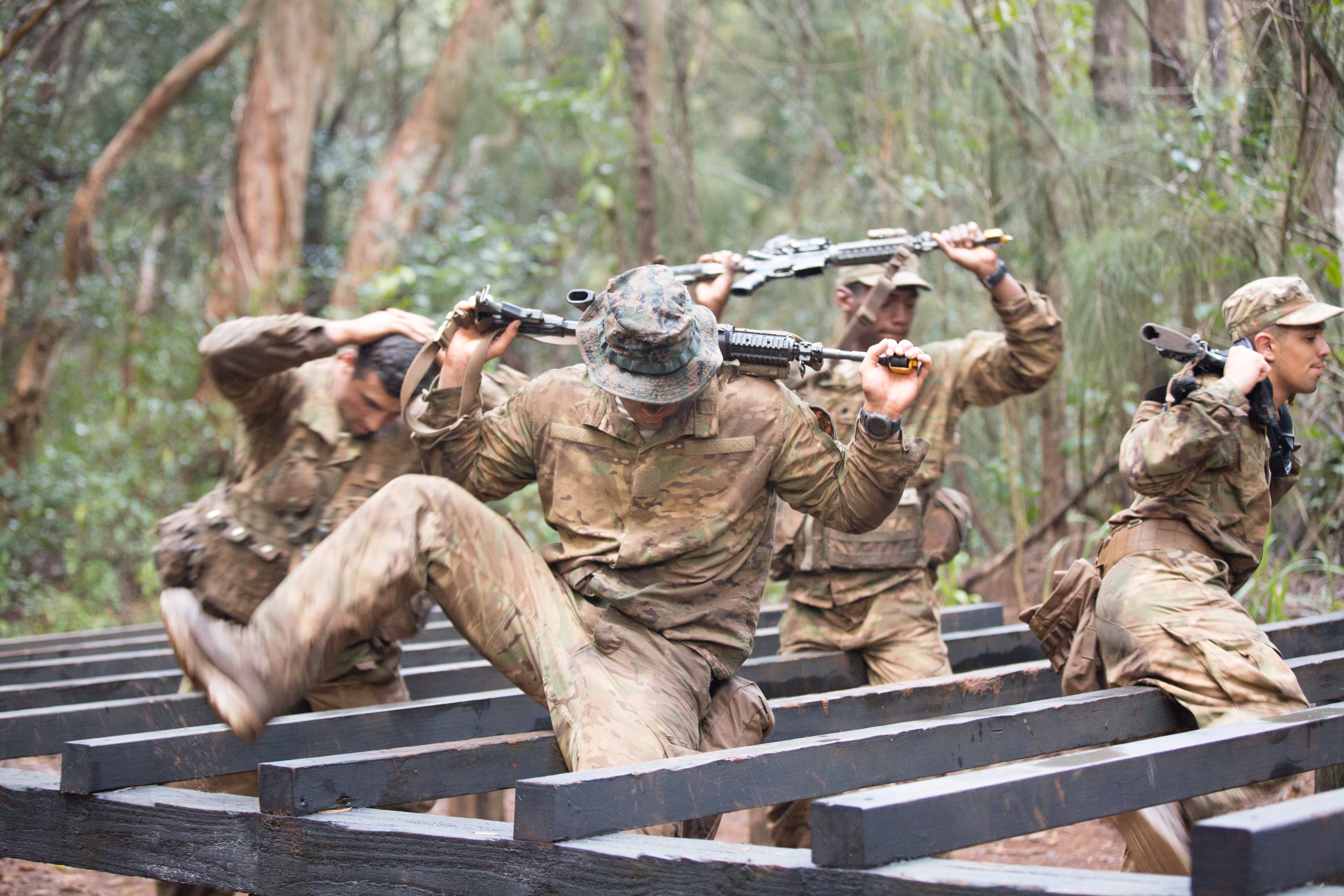
Soldiers of the 25th Infantry Division field test new uniforms designed for the jungle environment.
Photo Credit: Sgt. Ian D. Morales/Army
The thinner uniforms were also quick to absorb heat: "When you got into direct sunlight it would feel like you were cooking," Aviles added, citing the very-light nylon-spandex uniform as an example that didn’t work well.
His favorite was the nylon-cotton uniform that utilized the T420HT nylon.
"I’ve taken it through the Congo, through a harsh obstacle course. I put it in every situation; the uniform came out unscathed. I didn’t feel like I was too hot or too cold. I’ve slept in that uniform. Overall it’s just a comfortable wear," he said.
Sgt. Evan Mead, a 25th Infantry Division medic with the Jungle Operations Training Center in Hawaii, liked the 50/50 nylon-cotton blend on the stripped-down ACU.
Aviles also liked that the elimination of chest, butt and calf pockets.
"It makes it easier," he said. "Sliding down a gulch, [the pants] don’t get caught. I think removing the chest pocket makes it a little more breathable, airflow getting to the chest and cooling you down. You don’t typically use those [pockets] while you’re patrolling anyway," Aviles said.
Mead appreciated the mesh ventilation in the jacket, as well as the mesh guards in the lower legs.
"The mesh netting helps keep leaches from climbing up," Mead said. "You can tuck them into the boot. It keeps the pants un-bloused to let air flow, and helps drain water."
Better boots
As the Army dialed up its Pacific deployments, officials began hearing complaints that standard-issue boots were not built for the jungle.
Some of these complaints were issued to the Soldier Enhancement Program, which can seek off-the-shelf solutions to gaps in gear and equipment identified in the field.
The Army concluded, however, that the commercial market did not offer what soldiers needed: a supportive, comfortable, and, perhaps most importantly, quick-drying jungle boot.
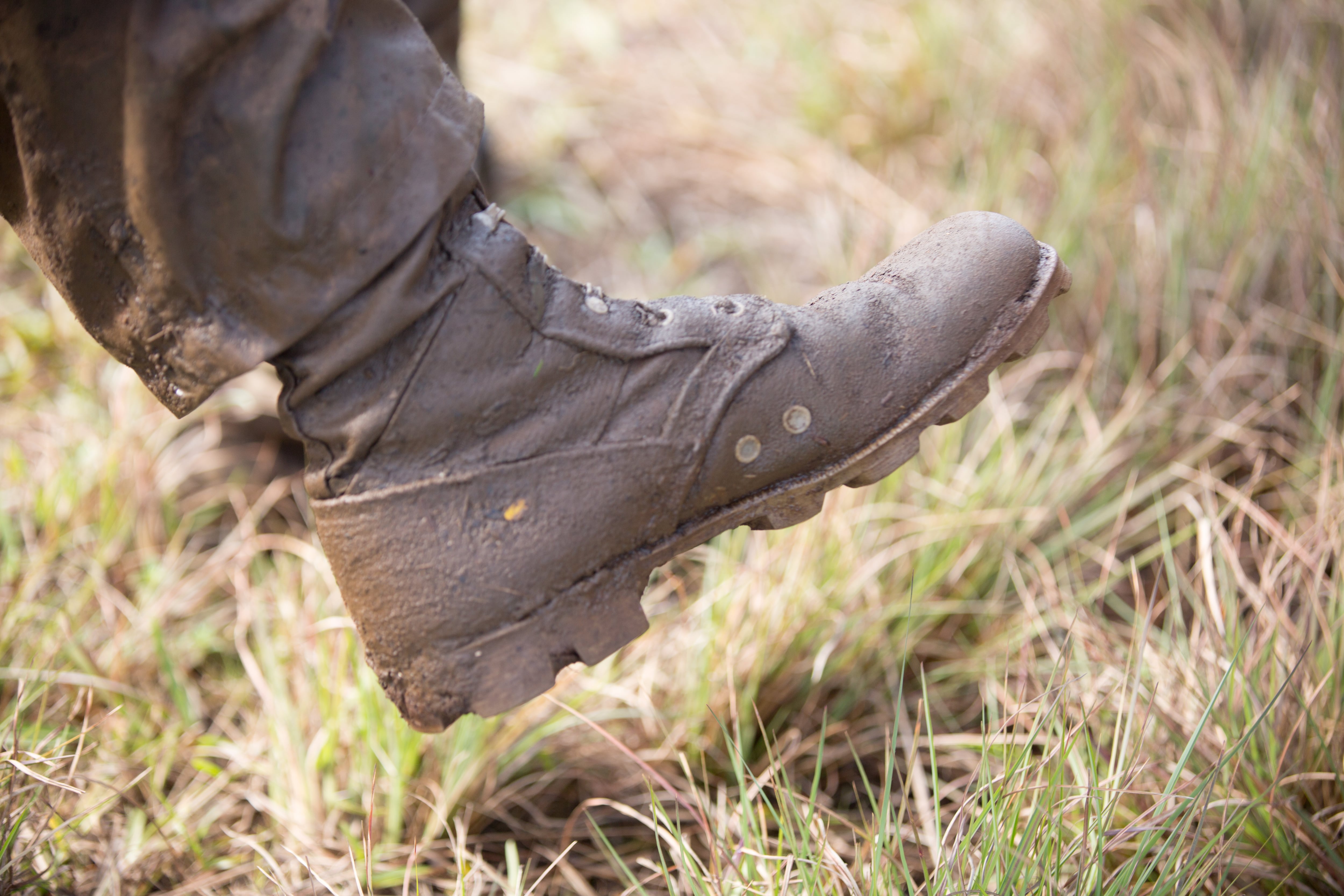
The Army wants to develop a jungle boot that can quickly shed water.
Photo Credit: Sgt. Ian D. Morales/Army
"One of the things that came out of the SEP initiative was a lot of the boots were holding onto too much water," said Kevin Hutcheson, SEP coordinator for Soldier Protection and Individual Equipment at PEO Soldier
and a former major in the Army who’s served in the 4th Infantry Division. "You can have the lightest boots in the world, but if they soak up too much water, they become heavy."
Mead concurred; the closest he’s seen in the current market has been a particular pair of Nike jungle boots, but he said they don’t last the way soldiers would like.
"They’re durable up to about six months. They do the job up to that point. They drain the water, they do a good job," Mead said. "But the jungle environment is harsher than what we’ve seen in the dessert or mountain."
After some laboratory tests on various materials, Natick designed five different boots to test, said Al Adams, Natick’s footwear project engineer.
Natick designed the five boots to be puncture-resistant as a prerequisite, but each featured a variety of materials and designs. Two had fairly thick soles while three of them had a thinner "Panama sole."
Mead said that while all the boots were well-made, the bulkier outsoles offered less stability and caused some rolled ankles. He also said the custom-made insole in one of the Panama sole boots was "probably the best insole I’ve ever had in a boot."
For testing, soldiers in Hawaii wore 1,000 boots in all. Each soldier received one pair to wear down for 90 days, a trial that ended in June. Mead and other instructors in Hawaii were able to test more boots, for longer periods of time. By the end of July he was still using boots he’d received about seven months ago.
"They’re holding up real well. We wear them in the jungle, outside the jungle, everywhere. They’re holding up better than the commercial Nike boots," Mead said.
Next steps
Once Natick analyzes the uniform materials, lab data, and user evaluations, it will report findings to PEO Soldier as well as the Maneuver Center of Excellence.
As Perry noted, the Army will take what it learned and design a material and a uniform during 2017. Natick aims to hold final user evaluations in either the fall of 2017 or the winter of 2018.
Perry said Natick would present the final user evaluation results to PEO Soldier in the winter or spring of 2018.
The boots could be arriving even sooner. Natick has also been analyzing boot tests and soldier feedback, and will report in the fall to PEO Soldier.
The next year or so will consist of getting documents and requirements approved by organizations from the Maneuver Center of Excellence (which develops requirements) to Army Requirements Oversight Council, as well as some limited testing and user evaluations of the final design.
Adams said the Army hopes that by the first fiscal quarter of 2018, which starts Sept. 1. The Army will have completed its engineering and design phase and moved on production contracts. Multiple vendors will produce the Army-owned design.
The Army’s effort hasn’t been a completely solo act. Perry said the Army and other organizations have been sharing data during the process.
The Marine Corps is conducting similar jungle gear tests at its Jungle Warfare Center in Okinawa, Japan.
The Marines also tested four prototype jungle boots, one each from Original Footwear, Bates Footwear, Belleville Boot Company and Rocky Boots.
